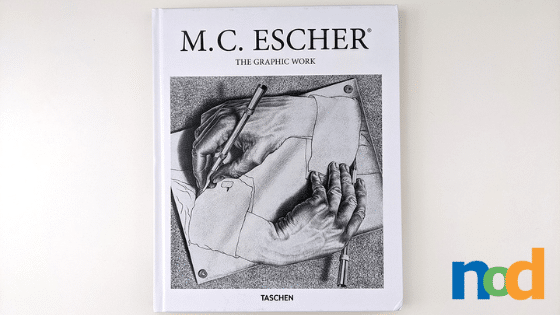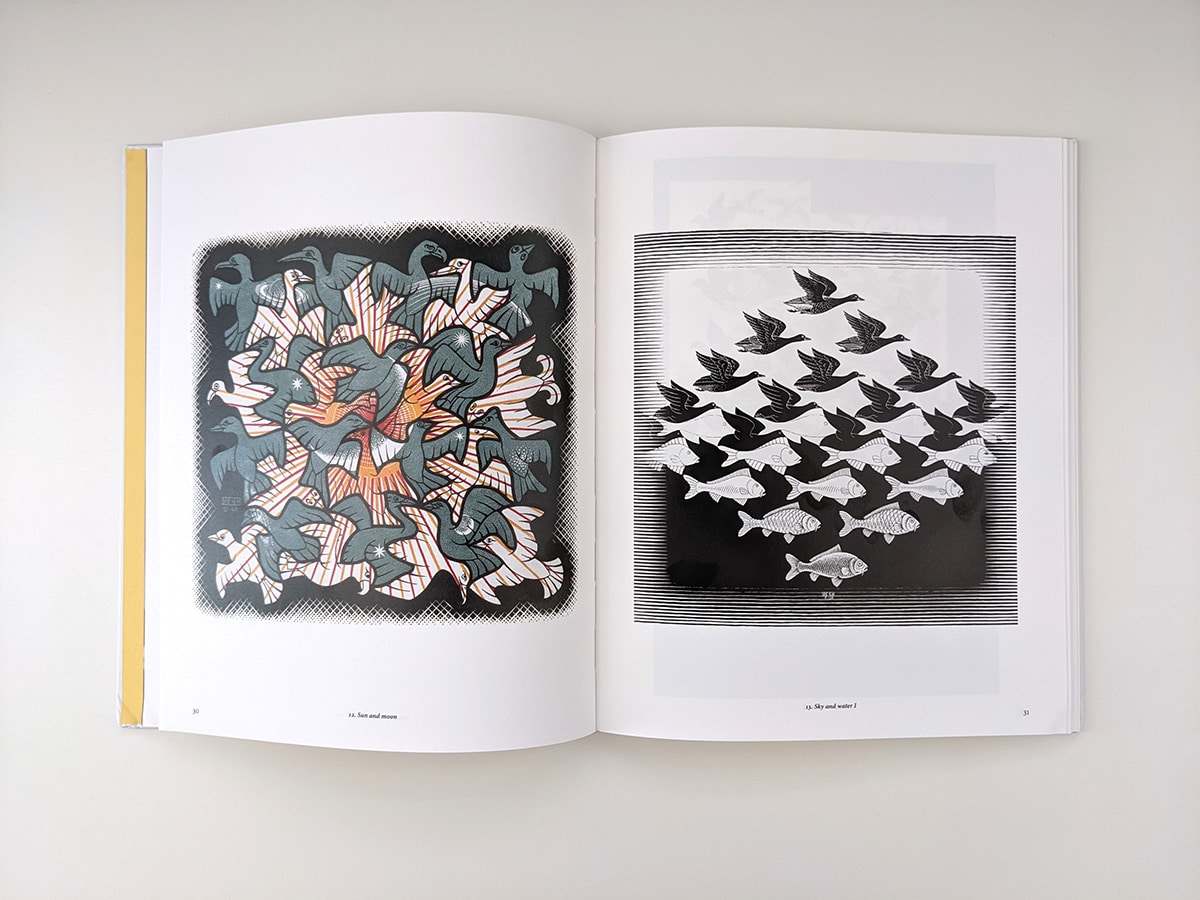Print Picks: M.C. Escher: The Graphic Work
by Taylor Slattery | July 26, 2022

There’s a whole body of his early work most will have never seen that unfortunately didn’t make the cut for this version either, with the focus here placed on his key works. It’s impossible to appreciate just how unforgiving the mediums are that Escher worked in via a reproduction alone, which is part of what makes this book so great. Not only does it begin with an introduction written by the artist himself, but all of the pieces included are accompanied by passages containing technical specifications and explanations of Escher’s inspirations and intentions for each piece.

The descriptions, which are also written by Escher, aim to provide a straightforward explanation for the piece to help viewers arrive at an easy understanding. While Escher himself regarded his work as fairly objective and impersonal, having noticed that each person’s reaction to the work was highly subjective, he saw it fit to personally write the explanations himself to appease those unable to reach an understanding through the visual alone.
The introduction is also interesting for Escher fans, as it offers a first-person look at his journey as an artist. Rather than a basic overview of his life and the recitation of facts anyone can find on Wikipedia, we’re presented with Escher’s own account of his early pursuit of technical mastery and his later transition to the communication of ideas uniquely his own. In what amounts to the artist finding his voice, so to speak, Escher recounts how his career can be split into two distinct periods. The first of which, saw the idea as secondary to the technique itself, with his selection of images designed to best highlight the features of the technique he was immersed in at the time. There are only a few works from this period included at the beginning of the book.

The second period of Escher’s career, the part for which he is most well-known, began the moment that his ideas took precedence over technique. He was no longer searching for the image that best suited the technique he was working on, but instead, was in search of the technique that best communicated his idea. This period also marks his discovery of math through intense observation of nature, an obsession that would guide the direction of all of his future works.
For fans of Escher’s illusions and math-based distortions of space and shape, M.C. Escher: The Graphic Work offers not only a collection of some of the artist’s most seminal works, but the insights that guided their creation. Whether you’ve got a casual interest in the artist or you’re a die-hard fan, this is a title worth checking out.


Taylor is the Managing Editor of Notes on Design. Taylor is a graphic designer, illustrator, and Design Lead at Weirdsleep.
If you are interested in developing your graphic design skills, Sessions College offers a range of graphic design courses for students at all levels. Contact Admissions for more information.
Recent Articles






























